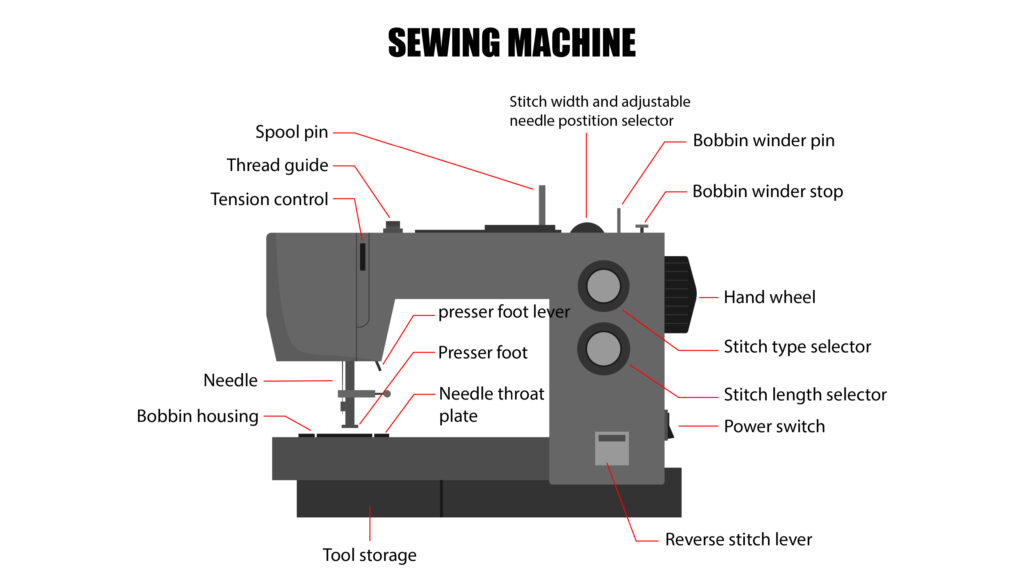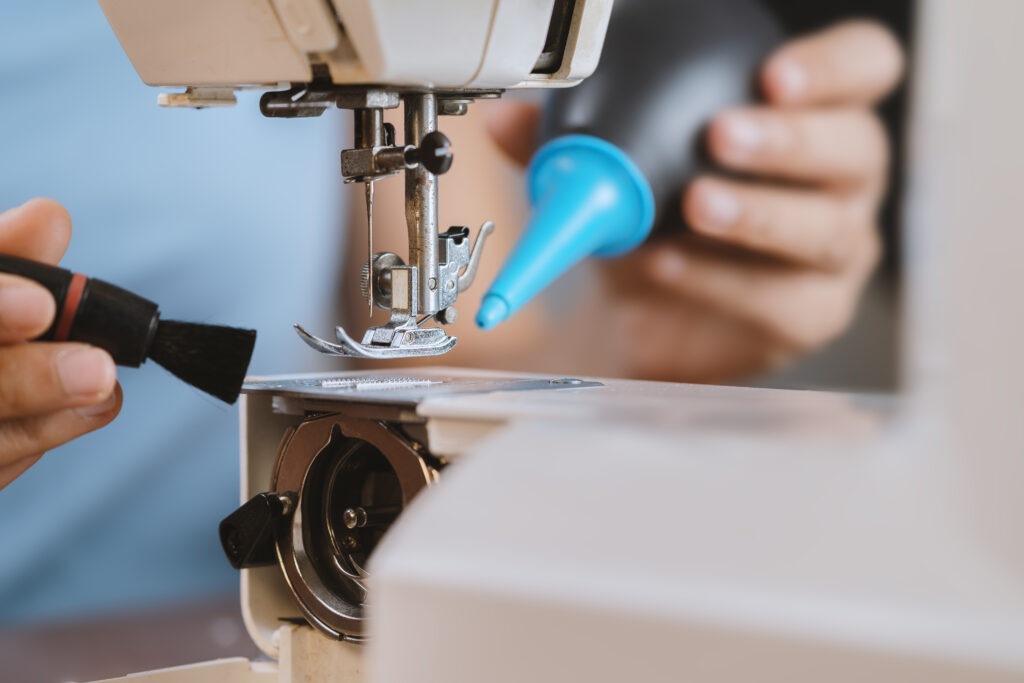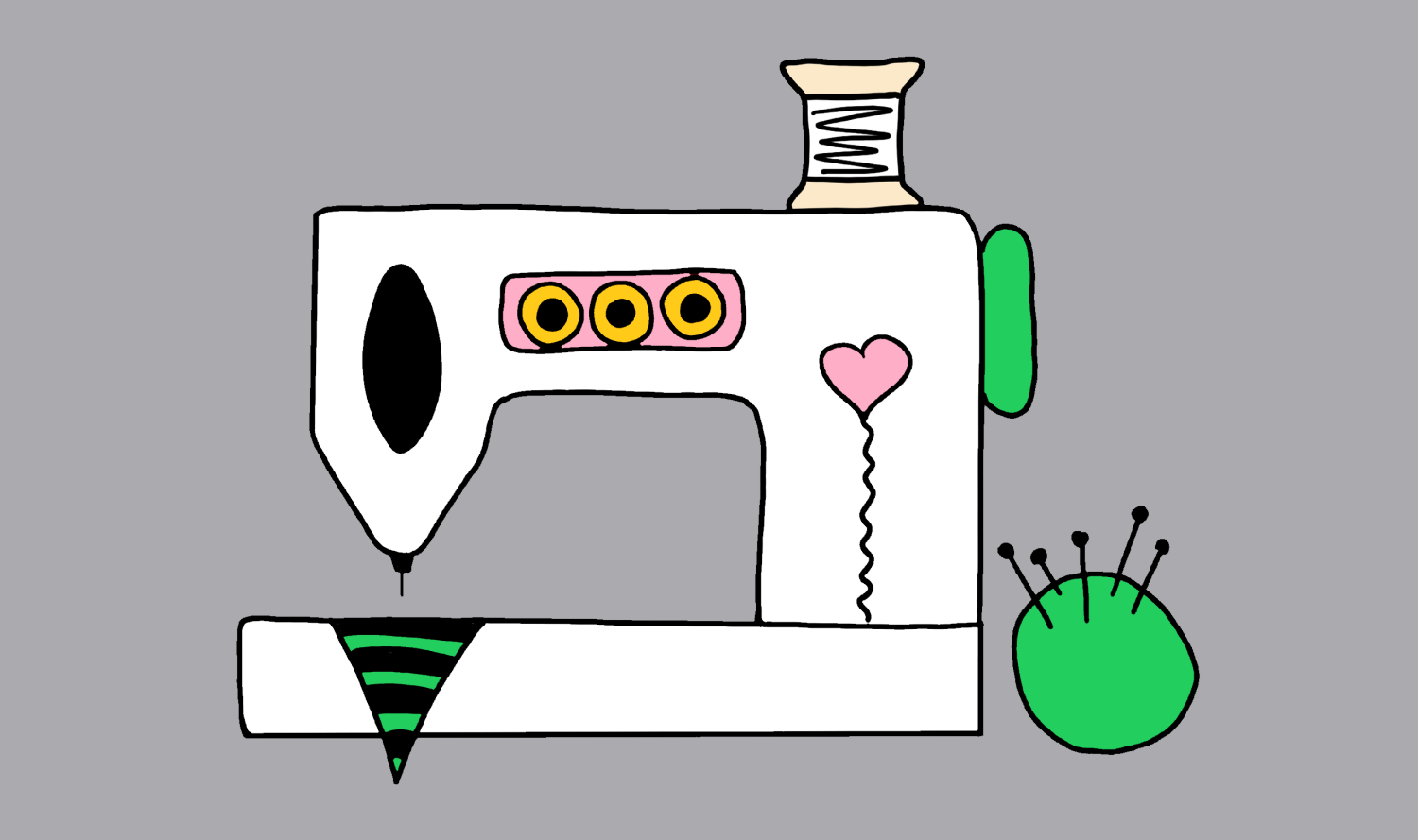Did you finally pull out your sewing machine for a stay at home project only to find that darn, it needs some TLC! Don’t fret – follow our tips below to troubleshoot common sewing machine problems and get your machine up and running again.
Getting Started With Your Machine
If it’s been a while since your machine saw daylight, brush up on your sewing knowledge by taking a look at the instruction manual. Many sewing machine manufacturers have manuals online such as Brother, Janome, Singer, Viking, and Pfaff.
Quickly peruse the manual to inform yourself on how to fix small issues with a touch of a button. Find answers to issues like – why is my machine sewing backward? Or why won’t my needle move even though the hand wheel is free? *Hint* a button or switch is set the wrong way.

10 Minute Tidy
It’s tempting to get your creative juices flowing and start sewing right away, but take time to do a good cleaning of your machine. A little bit of every project gets left behind. Consequently, dust and fibers are common culprits for malfunctioning. Make it a habit to clean before and after using your machine.
First, make sure to unplug your machine. Then remove the needle plate and bobbin case/housing to start your clean-out. Next, remove dust and lint using a micro-tip brush, lint brush, tweezers, compressed air, or a specialized mini vacuum. Did you know? ElectroRecycle accepts vacuums of many sizes for recycling – even mini ones!

Dynamite Troubleshooting
Above all, the Machine Technician at A Great Notion Sewing Supply recommends considering “T.N.T.” when troubleshooting issues:
“T” stands for threading. Don’t just assume you have threaded it correctly. Take the thread out and start again. Ensure the presser foot is up when threading. Make certain the thread is in the take up lever and has gone through all thread guides. Check that the thread isn’t jammed, or hasn’t tied itself around the spool pin or the thread mast etc.
“N” stands for needle. Is the needle inserted and all the way up the needlebar? Is the needle dull? Does your machine need a new needle? Is the needle the correct type for the job and machine model? Check with the machine manufacturer for compatible needle types. Is the needle bent? Is the needle the correct size for the thread you are using?
“T” stands for tension. Is the bobbin thread correctly threaded into the machine and has it gone through the tension dial? Does the bobbin case need adjusting? Was the bobbin wound correctly? Is the upper thread in the upper tension discs? Is the thread in the take up lever?
Are you still having problems with the tension? Watch this informative video by Rob Appell who has his own Youtube channel. His channel has many helpful TLC tips for sewing machine problems!
Contact the Experts
If all else fails you can always contact a local sewing shop for help. Sewing machines need regular tune-ups from a professional. Some shops are still open for tune-ups but please call before you go to check hours and ensure they are implementing safe practices. Other shops are offering over-the-phone troubleshooting and online purchases.
Find a Recycling Depot
Finally, if your machine is beyond repair, ElectroRecycle accepts sewing machines for recycling at all of our 200+ collection sites across British Columbia! We recycle many textile-related appliances with plugs or batteries such as:
- embroidery machines
- sergers
- quilting machines
- electric seam rippers
- bobbin winders
- irons
But that’s not all! Use our search tool to discover the more than 400 types of electrical appliances that are recyclable through our program.
Would you like more tips on how to repair small appliances? Read our blog posts:




Comments